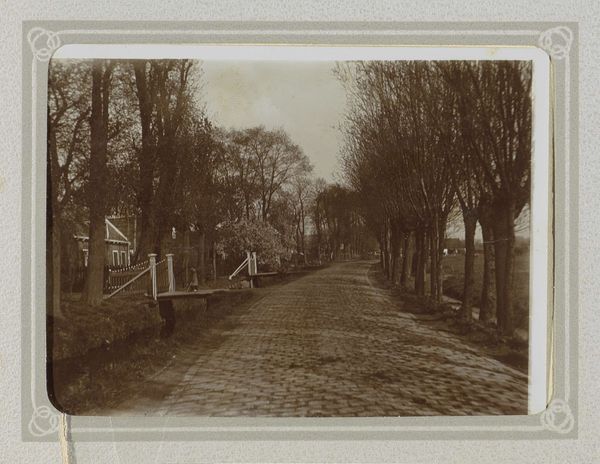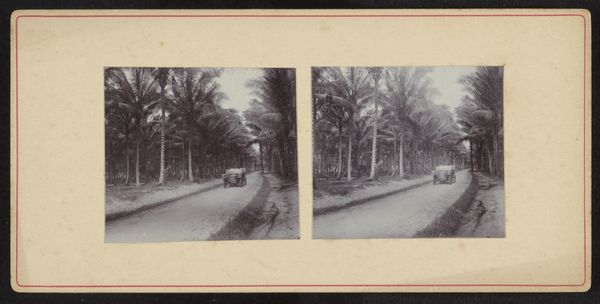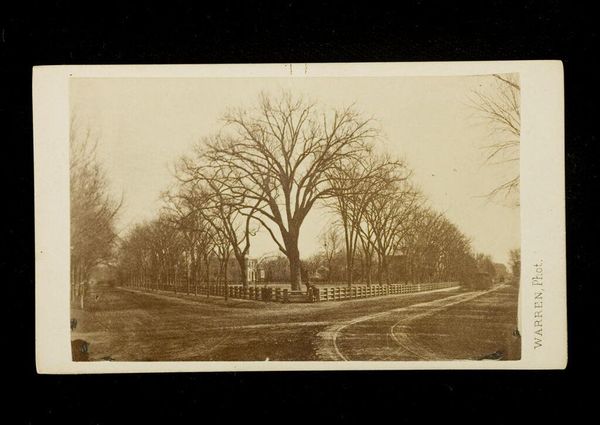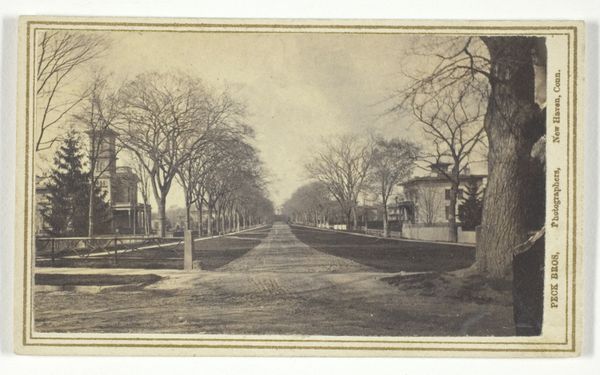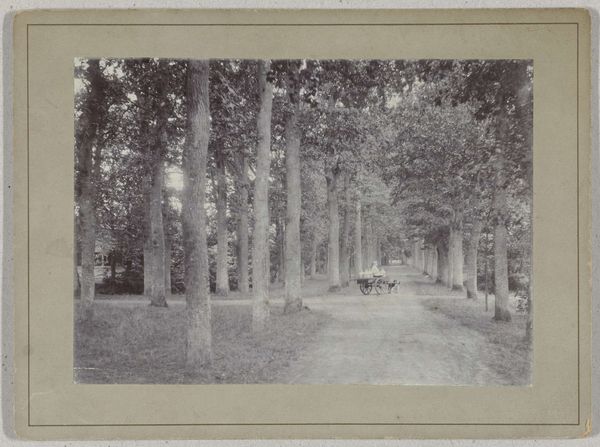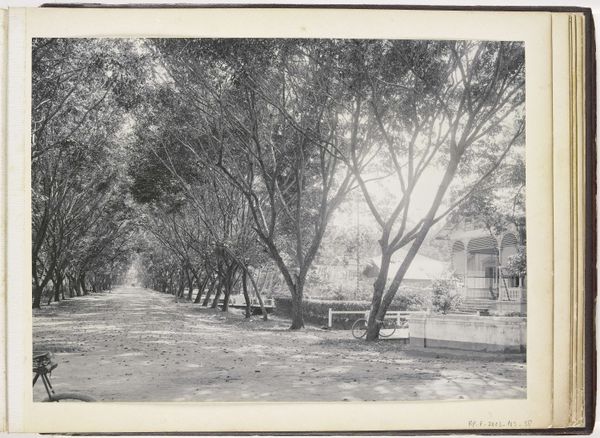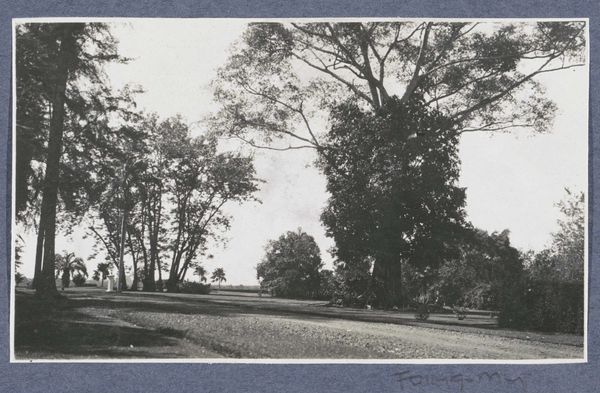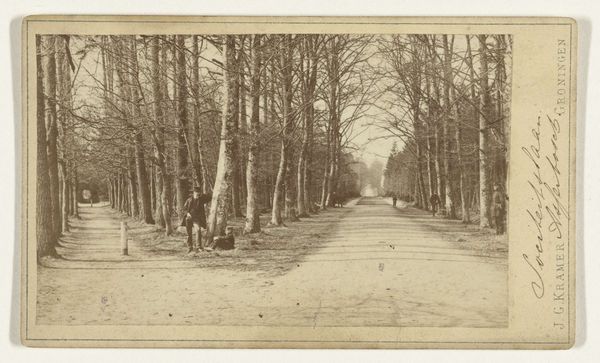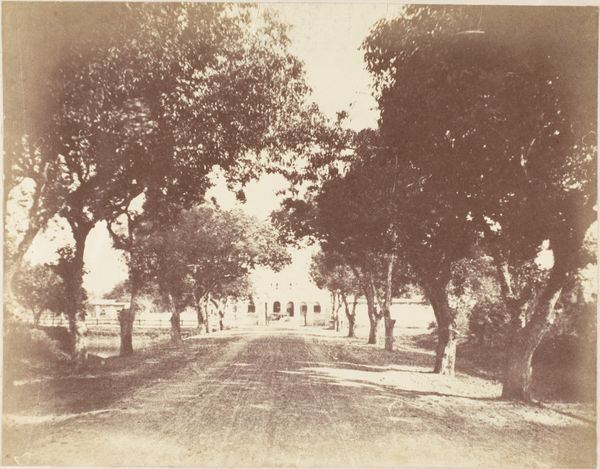
Man en een vrouw wandelend op een weg met bomen bij een windmolen c. 1905 - 1907
0:00
0:00
Dimensions: height 81 mm, width 110 mm
Copyright: Rijks Museum: Open Domain
Curator: This is "Man en een vrouw wandelend op een weg met bomen bij een windmolen" by Folkert Idzes de Jong, taken sometime between 1905 and 1907. It's a photograph that captures a rural scene in sepia tones. Editor: It's evocative. The almost monochrome palette gives it a slightly melancholic, timeless feel. The composition leads my eye straight down that road. Curator: The material reality of photography is crucial here. Consider the collodion process likely used at the time; the delicate balance of chemicals, exposure time, and the artist’s hand in creating the print. This photograph wasn't merely a snapshot; it was a labor-intensive creation. And look at the subject - how windmills at this time were harnessed power shaping the Dutch landscape itself. Editor: Absolutely, the tonality emphasizes those contrasts, right? Note how the strong verticality of the trees intersects with the horizontality of the road. The light seems almost evenly distributed, with just a hint of falloff towards the vanishing point. Curator: Precisely! This reflects a broader social context. The presence of the figures on the road also offers insights. How the road is a mode of production to the characters shown and how society engages with travel. They show not just people moving through the space, but also class and the access and restriction surrounding travel and space in society. Editor: True, and formally speaking, it is striking how de Jong captures the bare branches, almost like ink strokes, against the sky. Also how light and shadow give form to the windmills. The details speak of a careful consideration to depth and surface texture, despite the technological constrictions. Curator: Thinking about material limitations, you begin to interpret how the photo embodies accessibility in the arts for middle-class men such as De Jong, due to technology development in media. Editor: Indeed, looking closely, it’s that interplay of the natural, captured in such a manufactured tone, along the constructed windmill as both merge in that long shot down the open path that is intriguing, which speaks to the dynamism the artwork shows between subject matter and execution. Curator: Exactly. The social context, together with those material processes and constrictions is what shapes it into a relevant document and aesthetic expression, rather than simply an "image." Editor: A good reminder of how technology meets form.
Comments
No comments
Be the first to comment and join the conversation on the ultimate creative platform.
